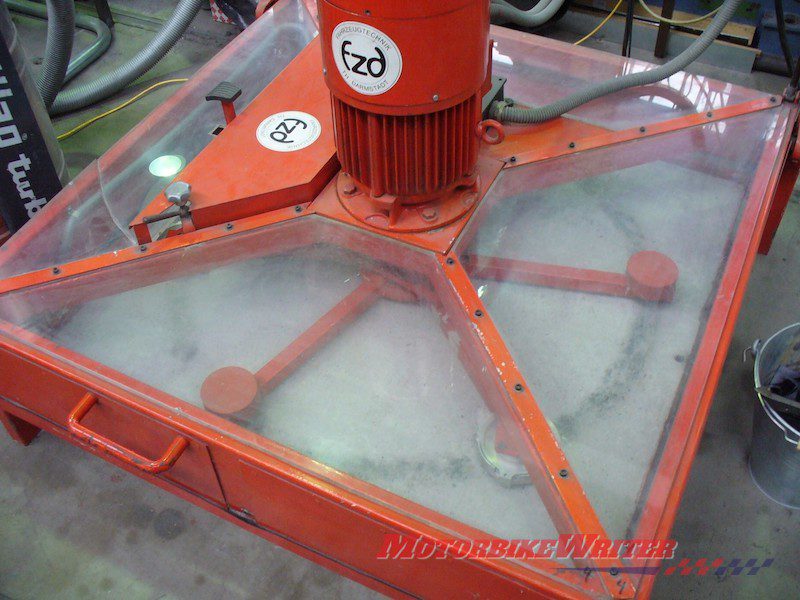Part 3 – Impact abrasion resistance.
Over the past seven years, Europe has developed a new clothing protection standard (EN17092).
We have asked Dr Chris Hurren to explain the new European standard and what it means for Aussie riders.
Dr Hurren is a research scientist at Deakin University in Geelong where he and his laboratory works on protective motorcycle clothing. He worked with Dr de Rome and others to produce the protocol that is used by MotoCAP for their testing regime.

This is the third in a four-part series explaining the new method of impact abrasion resistance measurement. Click here for Part 1 and Part 2.
Clothing standard: Abrasion resistance
The biggest difference in EN17092 is that it utilises the Advanced Abrasion Resistance Tester (AART) more commonly known as the Darmstadt method for evaluating the impact abrasion resistance of garment materials at specified riding speeds.
This test machine was developed 30 years ago at Technische Universitat Darmstadt. A short video was created by the university to show the test:
The test is a rotary system with three arms spinning around a drive shaft above a 900mm diameter concrete test surface. Material samples are attached to test heads at the end of each arm which are spun up to the test speed at 10mm above the test surface.
On reaching test speed, the drive shaft disconnects allowing the spinning arms and fabric samples to drop spinning freely in contact with the abrasive surface until they stop.
The test is given a pass at the given test speed if there are no holes formed in any of the three samples. A hole is deemed a hole if it is greater than 5mm in diameter. Test starting speeds are 120, 75, 70, 45 and 25km/h.

As this test starts at a high speed and slows to a stop over the duration of the test it may appear to riders to be more realistic than the Cambridge impact abrasion method (CAM), which is carried out at a constant speed. Unfortunately there is very little information available on the test machine or method especially in relation to validating the performance of the test against crash damage to clothing in real world crashes. The test surface used is concrete and is not designed to be periodically replaced, which suggests the surface may lose it abrasiveness over time. The surface is also prepared to resemble asphalt which is predominately used in urban environments. The question must be raised as to how representative is it of the chip seal roads that make up the majority of Australia’s rural and other higher speed road network.
While the use of specific test speeds in the AART is intuitively appealing, there are valid questions as to whether it does test for all riding environments. Research needs to show that the AART test covers all riding and is not just aimed at low speed urban riders. There are many questions yet unanswered. Is the test surface abrasive enough? Will the test surface clog during testing? Does it polish and become less aggressive over time? How do the test results relate to actual road injury? These really need to be answered about the test method to give riders confidence in its results.
At Deakin we have made simple comparisons between the CAM and AART tests with a piece of 12oz denim similar to that found in a pair of Levis 501 jeans. Samples were sent and tested on two AART machines in Europe. On both AART machines the denim passed the 75km/h test speed. On the CAM it achieved 0.6 seconds equating to approximately 5 metres of slide distance. This would mean that if the other parameters such as seam strength and tear were adequate a pair of the same jeans with armour in the knees and hips could meet “Class AA“ certification. While this might be enough protection for a scooter rider in a 20km/h crash how would it fair in a crash on any of our iconic riding roads?


